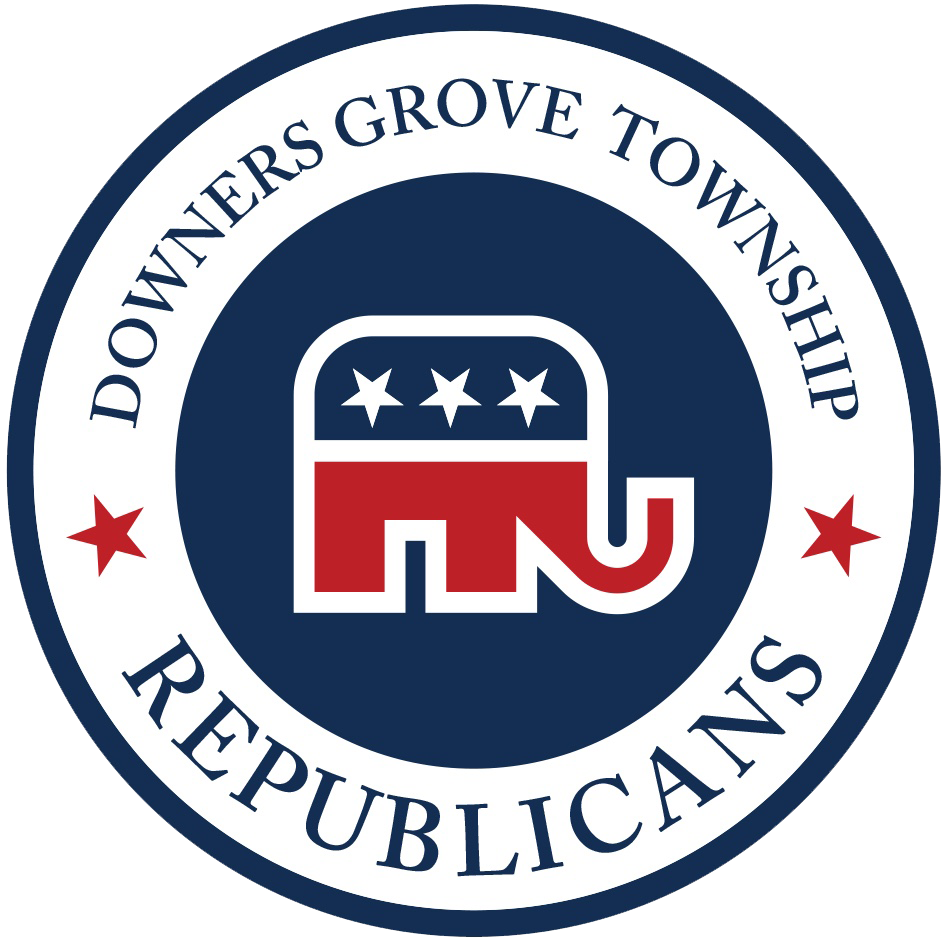Berlin breaks down significant SAFE-T ACT amendments.
Read his summary here…
State’s Attorney Bob Berlin at a SAFE-T Act informational event.
Concern was expressed recently over why DuPage County was not part of the Kankakee lawsuit. So we reached out to DuPage State's Attorney, Bob Berlin, for help understanding why. Berlin explained people may be unaware of significant changes that were made to the now-pending Safe-T Act and that he (the only Republican), Kane County State's Attorney, Jamie Mosser, and Julia Rietz, Champaign County State’s Attorney were the only three State’s Attorneys with a seat at the table to negotiate an overhaul of the original law. The criteria were that they would not join in the lawsuit; reasonable, given the opportunity to make major improvements. The strategy of 100 of the 102 State's Attorneys in Illinois was to pursue both the lawsuit and changes to the law in a trailer bill in the event the lawsuit is not successful.
However, in the wake of the Kankakee judge's ruling, The Illinois Supreme Court issued a complete halt to the implementation of the Safe-T Act after Berlin & Mosser filed an “Emergency Motion so as not to have confusion and disparity throughout the state on how to handle pre-trial confinement,” Berlin commented. He also provided us with his summary of the changes commenting:
Attached is a summary of the significant changes to the Safe-T Act. It's important that people know this is the law (P.A. 102-1104) that will go into effect if the Supreme Court overrules the Kankakee judge, not the original Safe-T Act with all of its flaws. The new law is significantly better, and I'm confident our judges will detain all defendants who are a danger to the community or a risk to flee. My office will file petitions to detain on all appropriate cases that fall under the statute. In addition, people need to know that no one currently in custody awaiting trial will be released without a hearing. The new law requires the defense to request a hearing if they want one. If they request a hearing, we will have 7, 60, or 90 days to conduct the hearing depending on the charge(s). Any defendant detained after a hearing will not be able to post bond to get out.
Berlin also stated that's not to say the entire Pre-Trial Fairness Act portion of the Safe-T Act may be ruled unconstitutional but "...the Amended Law P.A. 102-1104 becomes important if the Supreme Court overrules the Kankakee judge...Remember: if the lawsuit fails in the Supreme Court, we had to have a better law than the original Safe-T Act that will go into effect."
1) Dangerousness Standard Changed to include a “threat to the Community.”
Under the original Pretrial Fairness Act (PFA), the portion of the Safe-T Act eliminating cash bail, passed in January 2021, in order to detain a defendant under the dangerous standard the State had to prove that the defendant poses a specific, real and present threat to a person.
Under the Amendment, in order to detain a defendant under the dangerousness standard, the State has to prove the defendant presents a real and present threat to the safety of any person or persons or the community, based on the specific articulable facts of the case. This is a significant change in the law, and will enable judges to detain offenders who are a danger to the community, not just a specific person.
2) New Definition of Willful Risk of Flight
Under the PFA, defendants could also be detained in any Class 3 or greater felony if they were proven to be a “Willful risk of flight.” Under the PFA, in order to prove a willful risk of flight, the State had to prove the defendant was planning or attempting to intentionally evade prosecution by concealing oneself. Moreover, simple past non-appearance in court alone was not evidence of future intent to evade prosecution.
After the Amendment, “Willful flight” now means “intentional conduct with a purpose to thwart the judicial process to avoid prosecution.” Isolated instances of nonappearance in court alone are not evidence of the risk of willful flight, but reoccurrence and patterns of intentional conduct to evade prosecution may be considered as factors in assessing future intent to evade prosecution.
Under this definition, prosecutors can now argue, and judges can consider and detain a defendant who has missed court numerous times in the past.
3) The list of detainable offenses under the dangerousness standard has been greatly expanded.
Under the PFA, only non-probationable forcible felonies were detainable under the dangerousness standard. This meant that people charged with Aggravated Battery, Robbery, Aggravated Robbery, Burglary, Arson, Kidnaping, Threatening a Public Official, Intimidation, Hate Crimes, 2nd Degree Murder, Aggravated Assault, and Disorderly Conduct-Threats Against a School could not be detained if they were a threat to another person, persons, or the community.
After the Amendment, All non-probationable felonies including drug offenses are detainable if the defendant is a threat to a person, persons or the community. In addition, probationable forcible felonies such as Aggravated Battery-Great Bodily Harm, Robbery, Aggravated Robbery, Arson, Kidnapping, Threatening a Public Official, Intimidation, Hate Crimes, 2nd Degree Murder, Aggravated Assault, and Disorderly Conduct-Threats Against a School are now detainable if the defendant is proven to be a threat to a person, persons or the community. Non-probationable forcible felonies such as First Degree Murder, Predatory Criminal Sexual Assault of a Child, Aggravated Criminal Sexual Assault, Criminal Sexual Assault, Armed Robbery, Burglary where there is use of force against another person, Residential Burglary, Home Invasion, Vehicular Invasion, Aggravated Arson, Aggravated Kidnaping, and any other felony which involves the threat of or infliction of great bodily harm or permanent disability or disfigurement are also detainable under the new dangerousness standard.
Under the Amendment, the following offenses have been added to the list of detainable offenses under the dangerousness standard: Reckless Homicide and Involuntary Manslaughter, Child Abduction, Felony Violations of Child Endangerment, Hate Crime, Aggravated Unlawful Restraint, Threatening a Public Official, Aggravated Battery with a Deadly Weapon, Felony violations of the Humane Care for Animals Act, Aggravated DUI while operating a school bus, Aggravated DUI causing death or great bodily harm, Aggravated DUI after a previous reckless homicide conviction, and Aggravated DUI resulting in bodily harm to a child under 16. In addition, gun offenses, including Armed Habitual Criminal, Aggravated Discharge of a Firearm, and all non-probationable violations of Unlawful Use of a Weapon are detainable if the State proves the defendant is a threat to a person, persons or the community.
In addition, under the Amendment, an attempt to commit any of the above listed offenses is now detainable under the dangerousness standard. This is a significant change to the law.
Under the Amendment, all Class 3 and greater felonies are detainable if the State proves the defendant is a willful flight risk (using the new definition).
4) The Amendment changes the finding a judge must make on each court date to continue detention of the defendant.
Under the PFA, at each subsequent appearance of the defendant before the court, the judge had to find that continued detention was necessary to avoid the specific, real and present threat to any person (not the community) or of willful flight from prosecution to continue detention of the defendant.
Under the Amendment, at each subsequent appearance of the defendant before the court, the judge must find that continued detention is necessary to avoid a real and present threat to the safety of any person or persons or the community, based on the specific articulable facts of the case, or to prevent the defendant’s willful flight from prosecution.
5) Ability of Judges to issue Warrants when Defendants Fail to Appear in Court
The PFA required the extra step of a judge having to issue a summons before issuing a warrant if a defendant failed to appear in court.
Under the Amendment, judges now have the authority to issue a warrant if a defendant fails to appear in court.
6) Elimination of the 48-hour requirement before charging a person with escape for violating home confinement/electronic monitoring orders
Under the PFA, a defendant who fails to comply with a condition of the electronic monitoring or home detention program could only be charged with escape (a Class 3 felony) if he/she remained in violation for at least 48 hours.
Under the Amendment, a person charged with a felony, conditionally released with an order for electronic monitoring or home detention, who knowingly escapes or leaves from the geographic boundaries of an electronic monitoring or home detention program with the intent to evade prosecution is guilty of a Class 3 felony. There is no longer a 48-hour requirement.
In addition, under the Amendment, a person who violates a condition of the electronic monitoring or home detention program by knowingly and intentionally removing, disabling, destroying, or circumventing the operation of an approved electronic monitoring device can now be charged with a Class 3 felony Escape. There is no longer a 48-hour requirement.
7) Ability of Police to Arrest for Class B and Class C Misdemeanors
Under the PFA, Police were required to issue a citation in lieu of custodial arrest, upon proper identification, for those accused of traffic and Class B and C criminal misdemeanor offenses or of petty and business offenses, unless they posed “an obvious threat to the community or any person,” or if they had an obvious medical or mental health issues that pose a risk to their own safety.
Under the Amendment, Police can now arrest a person for a Class B or Class C Misdemeanor if the officer reasonably believes the accused poses a threat to the community (not “obvious threat”) or any person, or if a custodial arrest is necessary because the criminal activity persists after the issuance of a citation, or the accused has an obvious medical or mental health issue that poses a risk to the accused’s own safety. This resolves the issue of the police not being able to arrest a trespasser who refuses to leave the premises.
8) The Amendment does not require the opening of jail house doors on January 1, 2023.
The Amendment provides a timeframe of 7, 60, or 90 days (depending on the charge) for the State to file a petition to detain for all defendants in custody on pending charges as of January 1, 2023, but only after the defendant files a motion.
Overall, due to the amendment (P.A. 102-1104) it will be much easier for prosecutors to prove by clear and convincing evidence that defendants are a danger to the community or a risk of not appearing in court. As a result, judges now have the tools they need to detain offenders who pose a risk to the community or are likely to flee. Defendants who are detained will have no ability to post bond and be released.

